
(a)
Interpretation:
The preparation of the given compound from the alkene and other reagents is to be stated.
Concept introduction:
The systematic naming of organic compound is given by
Answer to Problem 5.32AP
The alkene which is used to synthesize the given compound is shown below.

The synthesis of the given compound is shown below.

Explanation of Solution
The alkene which is used to synthesize the given compound is shown below.

Figure 1
The alkene

Figure 2
The preparation of the given compound from the alkene and other reagents is shown in Figure 2.
(b)
Interpretation:
The preparation of the given compound from the alkene with and other reagents is to be stated.
Concept introduction:
Alkenes are the unsaturated class of organic compounds which have a double bond in their structure. The general formula of alkene is written as
The systematic naming of organic compound is given by IUPAC nomenclature. The naming of organic compound is done such that the structure of the organic compound is correctly interpreted from the name
Answer to Problem 5.32AP
The alkene which is used to synthesize the given compound is shown below.
![]()
The synthesis of the given compound is shown below.

Explanation of Solution
The alkene which is used to synthesize the given compound is shown below.
![]()
Figure 3
The alkene

Figure 4
The preparation of the given compound from the alkene and other reagents is shown in Figure 4.
(c)
Interpretation:
The preparation of the given compound from the alkene and other reagents is to be stated.
Concept introduction:
Alkenes are the unsaturated class of organic compounds which have a double bond in their structure. The general formula of alkene is written as
The systematic naming of organic compound is given by IUPAC nomenclature. The naming of organic compound is done such that the structure of the organic compound is correctly interpreted from the name.
Answer to Problem 5.32AP
The alkene which is used to synthesize the given compound is shown below.

The synthesis of the given compound is shown below.

Explanation of Solution
The alkene which is used to synthesize the given compound is shown below.

Figure 5
The alkene

Figure 6
The preparation of the given compound from the alkene and other reagents is shown in Figure 6.
(d)
Interpretation:
The preparation of the given compound from the alkene and other reagents is to be stated.
Concept introduction:
Alkenes are the unsaturated class of organic compounds which have a double bond in their structure. The general formula of alkene is written as
The systematic naming of organic compound is given by IUPAC nomenclature. The naming of organic compound is done such that the structure of the organic compound is correctly interpreted from the name.
Answer to Problem 5.32AP
The alkene which is used to synthesize the given compound is shown below.

The synthesis of the given compound is shown below.

Explanation of Solution
The alkene which is used to synthesize the given compound is shown below.
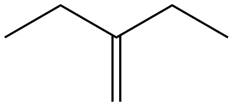
Figure 7
The alkene

Figure 8
The preparation of the given compound from the alkene and other reagents is shown in Figure 8.
(e)
Interpretation:
The preparation of the given compound from the alkene and other reagents is to be stated.
Concept introduction:
Alkenes are the unsaturated class of organic compounds which have a double bond in their structure. The general formula of alkene is written as
The systematic naming of organic compound is given by IUPAC nomenclature. The naming of organic compound is done such that the structure of the organic compound is correctly interpreted from the name.
Answer to Problem 5.32AP
The alkene which is used to synthesize the given compound is shown below.

The synthesis of the given compound is shown below.

Explanation of Solution
The alkene which is used to synthesize the given compound is shown below.

Figure 9
The alkene

Figure 10
The preparation of the given compound from the alkene and other reagents is shown in Figure 10.
(f)
Interpretation:
The preparation of the given compound from the alkene and other reagents is to be stated.
Concept introduction:
Alkenes are the unsaturated class of organic compounds which have a double bond in their structure. The general formula of alkene is written as
The systematic naming of organic compound is given by IUPAC nomenclature. The naming of organic compound is done such that the structure of the organic compound is correctly interpreted from the name.
Answer to Problem 5.32AP
The alkene which is used to synthesize the given compound is shown below.
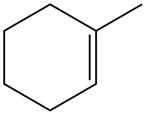
The synthesis of the given compound is shown below.

Explanation of Solution
The alkene which is used to synthesize the given compound is shown below.
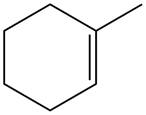
Figure 11
The alkene

Figure 12
The preparation of the given compound from the alkene and other reagents is shown in Figure 12.
(g)
Interpretation:
The preparation of the given compound from the alkene and other reagents is to be stated.
Concept introduction:
Alkenes are the unsaturated class of organic compounds which have a double bond in their structure. The general formula of alkene is written as
The systematic naming of organic compound is given by IUPAC nomenclature. The naming of organic compound is done such that the structure of the organic compound is correctly interpreted from the name.
Answer to Problem 5.32AP
The alkene which is used to synthesize the given compound is shown below.
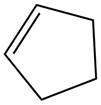
The synthesis of the given compound is shown below.
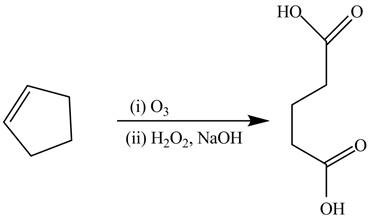
Explanation of Solution
The alkene which is used to synthesize the given compound is shown below.

Figure 13
The alkene cyclopentene undergoes ozonolysis reaction followed by oxidation reaction in presence of
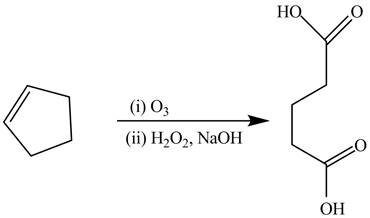
Figure 14
The preparation of the given compound from the alkene and other reagents is shown in Figure 14.
(h)
Interpretation:
The preparation of the given compound from the alkene and other reagents is to be stated.
Concept introduction:
Alkenes are the unsaturated class of organic compounds which have a double bond in their structure. The general formula of alkene is written as
The systematic naming of organic compound is given by IUPAC nomenclature. The naming of organic compound is done such that the structure of the organic compound is correctly interpreted from the name.
Answer to Problem 5.32AP
The alkene which is used to synthesize the given compound is shown below.
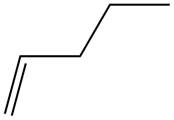
The synthesis of the given compound is shown below.

Explanation of Solution
The alkene which is used to synthesize the given compound is shown below.
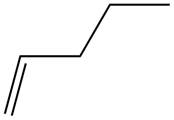
Figure 15
The alkene

Figure 16
The preparation of the given compound from the alkene and other reagentsis shown in Figure 16.
(i)
Interpretation:
The preparation of the given compound from the alkene and other reagents is to be stated.
Concept introduction:
Alkenes are the unsaturated class of organic compounds which have a double bond in their structure. The general formula of alkene is written as
The systematic naming of organic compound is given by IUPAC nomenclature. The naming of organic compound is done such that the structure of the organic compound is correctly interpreted from the name.
Answer to Problem 5.32AP
The alkene which is used to synthesize the given compound is shown below.
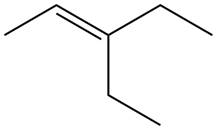
The synthesis of the given compound is shown below.

Explanation of Solution
The alkene which is used to synthesize the given compound is shown below.

Figure 17
The alkene

Figure 18
The preparation of the given compound from the alkene and other reagents is shown in Figure 18.
Want to see more full solutions like this?
Chapter 5 Solutions
Organic Chemistry Study Guide and Solutions
- Draw the major product of this reaction. Ignore inorganic byproducts and the amine side product. 'N' 1. NaOH, heat 2. Neutralizing work-up Select to Drawarrow_forwardSubmit Problem 3 of 10 Draw the major product of this reaction. Ignore inorganic byproducts and the amine side product. O 'N' NH 1. NaOH, heat 2. Neutralizing work-up Select to Drawarrow_forwardb) Certain cyclic compounds are known to be conformationally similar to carbohydrates, although they are not themselves carbohydrates. One example is Compound C shown below, which could be imagined as adopting four possible conformations. In reality, however, only one of these is particularly stable. Circle the conformation you expect to be the most stable, and provide an explanation to justify your choice. For your explanation to be both convincing and correct, it must contain not only words, but also "cartoon" orbital drawings contrasting the four structures. Compound C Possible conformations (circle one): Детarrow_forward
- Lab Data The distance entered is out of the expected range. Check your calculations and conversion factors. Verify your distance. Will the gas cloud be closer to the cotton ball with HCI or NH3? Did you report your data to the correct number of significant figures? - X Experimental Set-up HCI-NH3 NH3-HCI Longer Tube Time elapsed (min) 5 (exact) 5 (exact) Distance between cotton balls (cm) 24.30 24.40 Distance to cloud (cm) 9.70 14.16 Distance traveled by HCI (cm) 9.70 9.80 Distance traveled by NH3 (cm) 14.60 14.50 Diffusion rate of HCI (cm/hr) 116 118 Diffusion rate of NH3 (cm/hr) 175.2 175.2 How to measure distance and calculate ratearrow_forwardFor the titration of a divalent metal ion (M2+) with EDTA, the stoichiometry of the reaction is typically: 1:1 (one mole of EDTA per mole of metal ion) 2:1 (two moles of EDTA per mole of metal ion) 1:2 (one mole of EDTA per two moles of metal ion) None of the abovearrow_forwardPlease help me solve this reaction.arrow_forward
- Indicate the products obtained by mixing 2,2-dimethylpropanal with acetaldehyde and sodium ethoxide in ethanol.arrow_forwardSynthesize 2-Ethyl-3-methyloxirane from dimethyl(propyl)sulfonium iodide using the necessary organic or inorganic reagents. Draw the structures of the compounds.arrow_forwardSynthesize 2-Hydroxy-2-phenylacetonitrile from phenylmethanol using the necessary organic or inorganic reagents. Draw the structures of the compounds.arrow_forward
- Synthesize N-Methylcyclohexylamine from cyclohexanol using the necessary organic or inorganic reagents. Draw the structures of the compounds.arrow_forwardSynthesize N-Methylcyclohexylamine from cyclohexanol using the necessary organic or inorganic reagents. Draw the structures of the compounds.arrow_forwardIf possible, please provide the formula of the compound 3,3-dimethylbut-2-enal.arrow_forward
 ChemistryChemistryISBN:9781305957404Author:Steven S. Zumdahl, Susan A. Zumdahl, Donald J. DeCostePublisher:Cengage Learning
ChemistryChemistryISBN:9781305957404Author:Steven S. Zumdahl, Susan A. Zumdahl, Donald J. DeCostePublisher:Cengage Learning ChemistryChemistryISBN:9781259911156Author:Raymond Chang Dr., Jason Overby ProfessorPublisher:McGraw-Hill Education
ChemistryChemistryISBN:9781259911156Author:Raymond Chang Dr., Jason Overby ProfessorPublisher:McGraw-Hill Education Principles of Instrumental AnalysisChemistryISBN:9781305577213Author:Douglas A. Skoog, F. James Holler, Stanley R. CrouchPublisher:Cengage Learning
Principles of Instrumental AnalysisChemistryISBN:9781305577213Author:Douglas A. Skoog, F. James Holler, Stanley R. CrouchPublisher:Cengage Learning Organic ChemistryChemistryISBN:9780078021558Author:Janice Gorzynski Smith Dr.Publisher:McGraw-Hill Education
Organic ChemistryChemistryISBN:9780078021558Author:Janice Gorzynski Smith Dr.Publisher:McGraw-Hill Education Chemistry: Principles and ReactionsChemistryISBN:9781305079373Author:William L. Masterton, Cecile N. HurleyPublisher:Cengage Learning
Chemistry: Principles and ReactionsChemistryISBN:9781305079373Author:William L. Masterton, Cecile N. HurleyPublisher:Cengage Learning Elementary Principles of Chemical Processes, Bind...ChemistryISBN:9781118431221Author:Richard M. Felder, Ronald W. Rousseau, Lisa G. BullardPublisher:WILEY
Elementary Principles of Chemical Processes, Bind...ChemistryISBN:9781118431221Author:Richard M. Felder, Ronald W. Rousseau, Lisa G. BullardPublisher:WILEY





